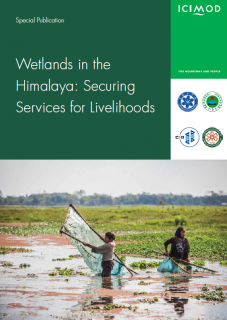
The Hindu Kush Himalaya (HKH) region stretches across eight countries in Asia and covers an area of 3.5 million km2. Its lakes, rivers, aquifers and wetlands are an indispensable source of freshwater to the 230 million people living in the region, and its ecosystems provide a wide range of goods and services such as drinking water, irrigation, hydro-energy, food-processing, recreation, habitats for biodiversity including rare and endemic species, water purification and buffering floods, among many others.
There is very limited information available on the overall status of wetlands and resource exploitation in the HKH region because of the difficult geographic terrain and harsh climatic conditions. To generate a better understanding, a common platform was created to exchange information, learnings and research findings, and in 2015 a Regional Expert Consultative Symposium on ‘Managing Wetland Ecosystem in the Hindu Kush Himalaya: Securing Services for Livelihoods’ was held in Dali, Yunnan Province of China. The Wetlands in the Himalaya: Securing Services for Livelihoods report provides a summary of the symposium, along with several scientific papers presented by experts on diverse topics like wetland ecology, status and threats, economic valuation, policies, benefit sharing mechanisms and traditional knowledge prevalent in the HKH region.
